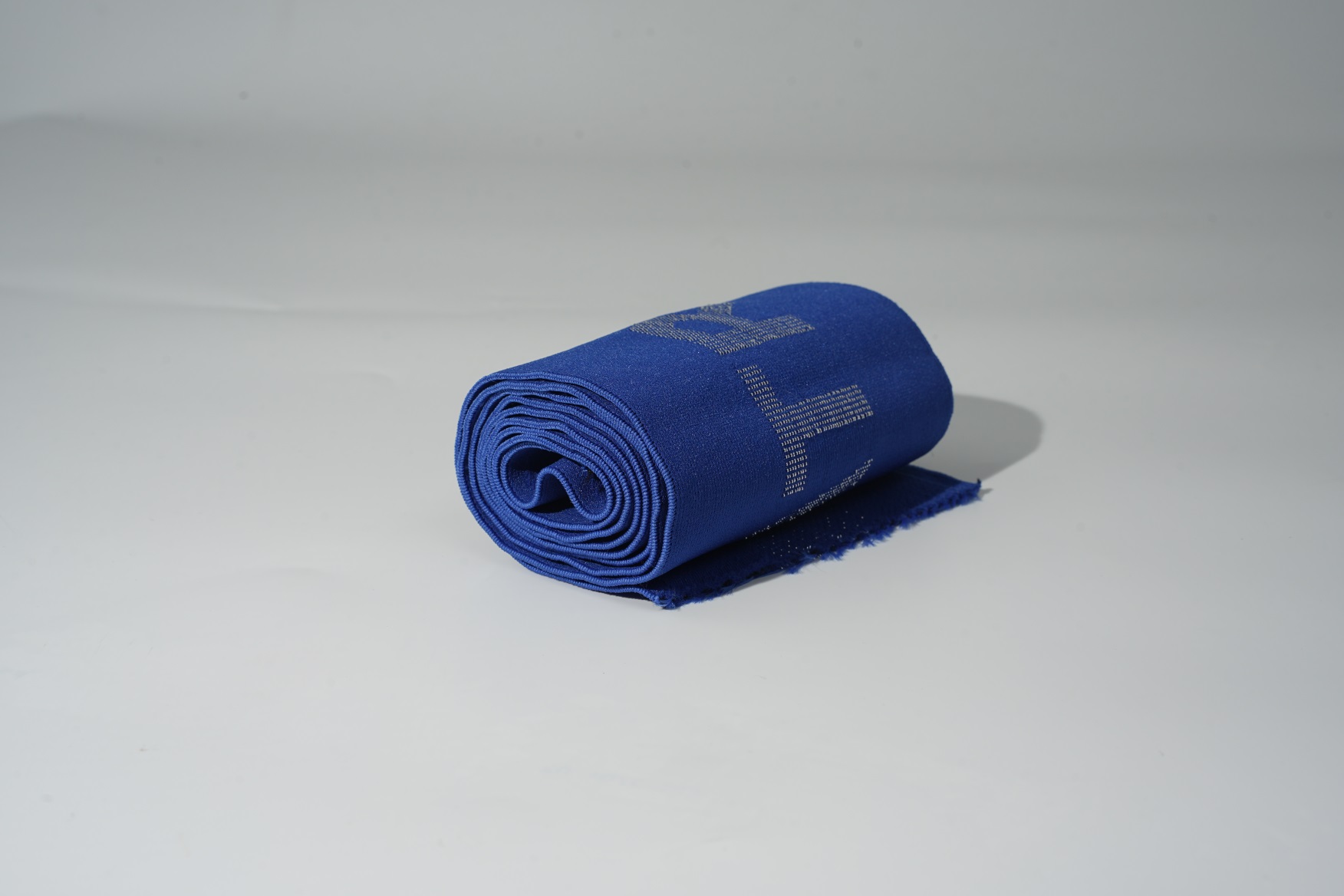2025-08-12 17:54:35
In the textile and fashion industries, the demand for specialized materials that offer both functionality and aesthetic appeal continues to grow. One such material that has garnered significant attention is the Extra Wide Jacquard Elastic—a versatile, durable, and visually appealing type of Elastic Webbing widely used in apparel, accessories, and home textiles. Understanding the intricate manufacturing process behind this product helps manufacturers maintain high quality and meet the evolving needs of consumers.

Extra Wide Jacquard Elastic refers to Elastic Webbing that features intricate woven patterns created through the jacquard weaving technique. Unlike plain elastic bands, this elastic webbing combines stretchability with elaborate designs, making it suitable for visible applications like waistbands, straps, belts, and decorative elements in garments. The "extra wide" dimension typically ranges from 3 inches to 6 inches or more, allowing for better support, comfort, and design versatility.
The hallmark of this elastic webbing is the jacquard weave—a complex weaving method that allows individual control of each warp thread. This technology enables the production of detailed, multi-colored patterns directly into the fabric rather than printing or embroidery. The jacquard technique utilizes a special loom equipped with a jacquard head, which reads punched cards or digital instructions to raise or lower specific warp threads during weaving.
The quality of extra wide jacquard elastic begins with the selection of raw materials. The primary fibers used include polyester, nylon, and natural rubber or spandex for elasticity. These materials are chosen based on desired properties such as strength, stretch, durability, and color retention. High-quality yarns ensure that the final Elastic Webbing withstands repeated stretching, washing, and wear without losing shape or pattern clarity.
Before weaving, yarns undergo cleaning, sizing, and sometimes dyeing processes. Dyeing may occur before or after weaving, depending on the intended design and colorfastness requirements. For jacquard patterns, yarns are usually pre-dyed to guarantee consistent, vibrant colors throughout the elastic webbing. The dyeing process involves specialized equipment to ensure uniform absorption and resistance to fading.
During weaving, the yarns are interlaced on jacquard looms according to the programmed design. The loom's jacquard mechanism manipulates each warp yarn individually, allowing complex images, logos, or patterns to emerge seamlessly across the width of the elastic. The elasticity is integrated by incorporating spandex or rubber yarns along the weft or warp, which provide the necessary stretch and recovery.
The weaving speed and tension control are critical parameters to produce a consistent and defect-free elastic webbing. Skilled operators monitor the looms to avoid issues like thread breakage, pattern misalignment, or uneven elasticity.
After weaving, the elastic webbing undergoes several finishing treatments to enhance performance and appearance:
Heat Setting: Stabilizes the fabric to maintain dimensional stability and elasticity.
Coating or Laminating: Some elastic webbings receive coatings for water resistance, abrasion protection, or additional texture.
Cutting and Inspection: The webbing is cut to specified widths and lengths, followed by rigorous inspection for defects, pattern clarity, and stretch consistency.
High-quality extra wide jacquard elastic must meet strict standards regarding tensile strength, elasticity percentage, colorfastness, and durability. Quality control teams perform multiple tests such as:
Stretch and Recovery Tests: Ensuring the webbing stretches to specified limits and returns to its original size without deformation.
Colorfastness Tests: Assessing resistance to washing, light exposure, and rubbing.
Visual Inspection: Checking for weaving flaws, inconsistent patterns, or damaged yarns.
The superior aesthetics and functionality of extra wide jacquard elastic have expanded its use beyond traditional sportswear and lingerie into high-fashion garments, luxury accessories, orthopedic braces, and even furniture upholstery. Its ability to combine comfort with distinctive design makes it highly sought after by designers and manufacturers alike.
As consumers increasingly demand customizable and sustainable products, manufacturers are innovating by integrating eco-friendly fibers and recyclable materials into the jacquard elastic webbing. This shift towards sustainability is expected to drive future growth in the Elastic Webbing market.
The manufacturing process of high-quality extra wide jacquard elastic is a sophisticated blend of advanced weaving technology, precise raw material selection, and meticulous quality control. This attention to detail ensures the production of elastic webbing that not only performs well but also enhances the visual appeal of final products.
For manufacturers and brands, investing in quality jacquard elastic means offering customers superior comfort, durability, and style—qualities that differentiate their products in a competitive marketplace. As technology and consumer preferences evolve, the versatility and aesthetic potential of extra wide jacquard elastic will continue to inspire innovation across industries.